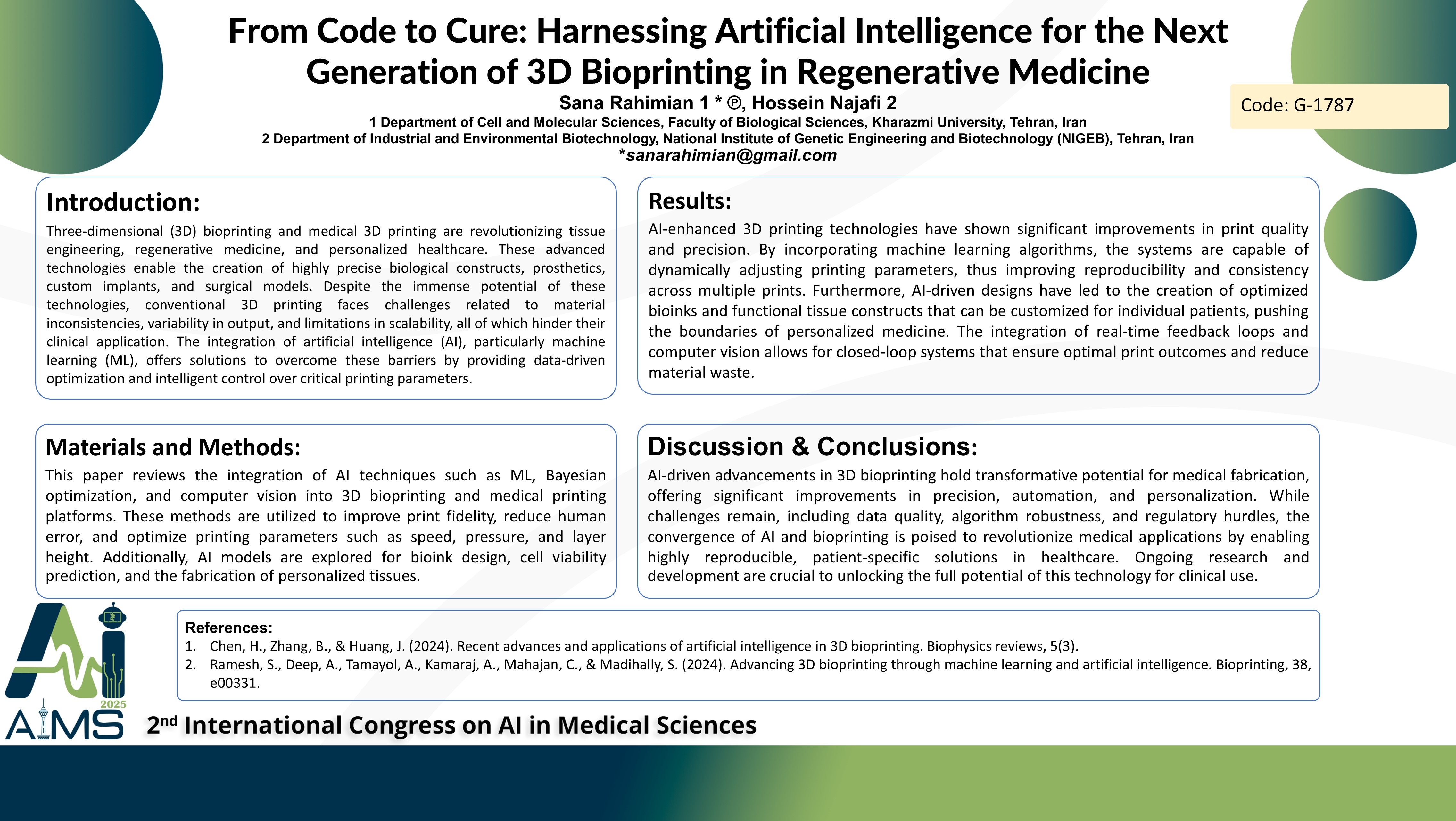From Code to Cure: Harnessing Artificial Intelligence for the Next Generation of 3D Bioprinting in Regenerative Medicine
Code: G-1787
Authors: Sana Rahimian * ℗, Hossein Najafi
Schedule: Not Scheduled!
Tag: Robotics in Surgery and Care
Download: Download Poster
Abstract:
Abstract
Background and Aim: Three-dimensional (3D) bioprinting and medical 3D printing are revolutionizing tissue engineering, regenerative medicine, and personalized healthcare. These advanced technologies enable the creation of highly precise biological constructs, prosthetics, custom implants, and surgical models. Despite the immense potential of these technologies, conventional 3D printing faces challenges related to material inconsistencies, variability in output, and limitations in scalability, all of which hinder their clinical application. The integration of artificial intelligence (AI), particularly machine learning (ML), offers solutions to overcome these barriers by providing data-driven optimization, real-time monitoring, and intelligent control over critical printing parameters. Methods: This paper reviews the integration of AI techniques such as ML, Bayesian optimization, and computer vision into 3D bioprinting and medical printing platforms. These methods are utilized to improve print fidelity, reduce human error, and optimize printing parameters such as speed, pressure, and layer height. Additionally, AI models are explored for bioink design, cell viability prediction, and the fabrication of personalized tissues. Applications including organ-on-chip systems, pre-surgical anatomical models, and personalized drug screening are highlighted. Results: AI-enhanced 3D printing technologies have shown significant improvements in print quality and precision. By incorporating machine learning algorithms, the systems are capable of dynamically adjusting printing parameters, thus improving reproducibility and consistency across multiple prints. Furthermore, AI-driven designs have led to the creation of optimized bioinks and functional tissue constructs that can be customized for individual patients, pushing the boundaries of personalized medicine. The integration of real-time feedback loops and computer vision allows for closed-loop systems that ensure optimal print outcomes and reduce material waste. Conclusion: AI-driven advancements in 3D bioprinting hold transformative potential for medical fabrication, offering significant improvements in precision, automation, and personalization. While challenges remain, including data quality, algorithm robustness, and regulatory hurdles, the convergence of AI and bioprinting is poised to revolutionize medical applications by enabling highly reproducible, patient-specific solutions in healthcare. Ongoing research and development are crucial to unlocking the full potential of this technology for clinical and therapeutic use.
Keywords
Artificial Intelligence, Machine Learning, 3D Bioprinting
